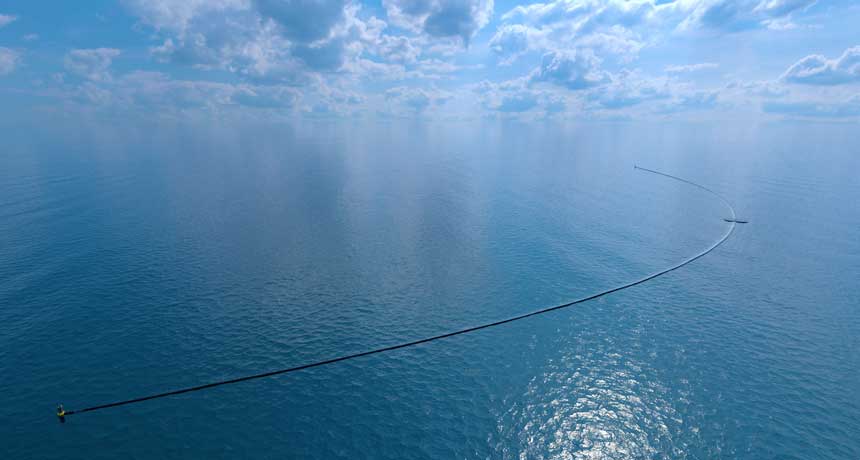Questions for ‘Enormous floating barrier will corral ocean trash’

This computer rendering shows what the 600-meter-long (2,000-foot) Ocean Cleanup system will look like floating in the North Pacific. Currents will push on the boom to form a u-shape. The system is designed to trap bits of plastic that boats can collect later.
The Ocean Cleanup